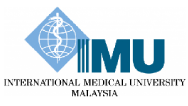Decision making in hyperglycaemia seen in pregnancy
Authors: Kavitha Nagandla, Sivalingam Nalliah.
ABSTRACT
Delay in childbearing, family history of type 2 diabetes mellitus and obesity in childbearing years increases a possibility of glucose intolerance or overt diabetes in pregnancy which may remain unrecognised unless an oral glucose tolerance test is done. The International Association of Diabetes and Pregnancy Study Group (IADPSG, 2010) recommended the detection and diagnosis of hyperglycaemic disorders in pregnancy at two stages of pregnancy, the first stage looking for ‘overt diabetes’ in early pregnancy based on risk factors like age, past history of gestational diabetes and obesity and the second stage where ‘gestational diabetes’ at 24-28 weeks with 75 g oral glucose tolerance test. Although the one step approach with 75 g of glucose offers operational convenience in diagnosing gestational diabetes, there are concerns raised by the National Institute of Health in the recent consensus statement, supporting the two step approach (50-g, 1-hour loading test screening 100-g, 3-hour oral glucose tolerance test) as the recommended approach for detecting gestational diabetes. Medical nutrition therapy (MNT) with well-designed meal plan and appropriate exercise achieves normoglycemia without inducing ketonemia and weight loss in most pregnant women with glucose intolerance. Rapidly acting insulin analogues, such as insulin lispro and aspart are safe in pregnancy and improve postprandial glycemic control in women with pre-gestational diabetes. The long acting analogues (Insulin detemir and glargine) though proven to be safe in pregnancy, do not confer added advantage if normoglycemia is achieved with intermediate insulin (NPH). Current evidence indicates the safe use of glyburide and metformin in the management of Type 2 diabetes and gestational diabetes as other options. However, it is prudent to communicate to the women that there is no data available on the long-term health of the offspring and the safety of these oral hypoglycemic drugs are limited to the prenatal period.
Keywords: Diabetes, Pregnancy, Medical Nutrition Therapy, Insulin.
Citation: IeJSME 2014 8(1): 8-18

